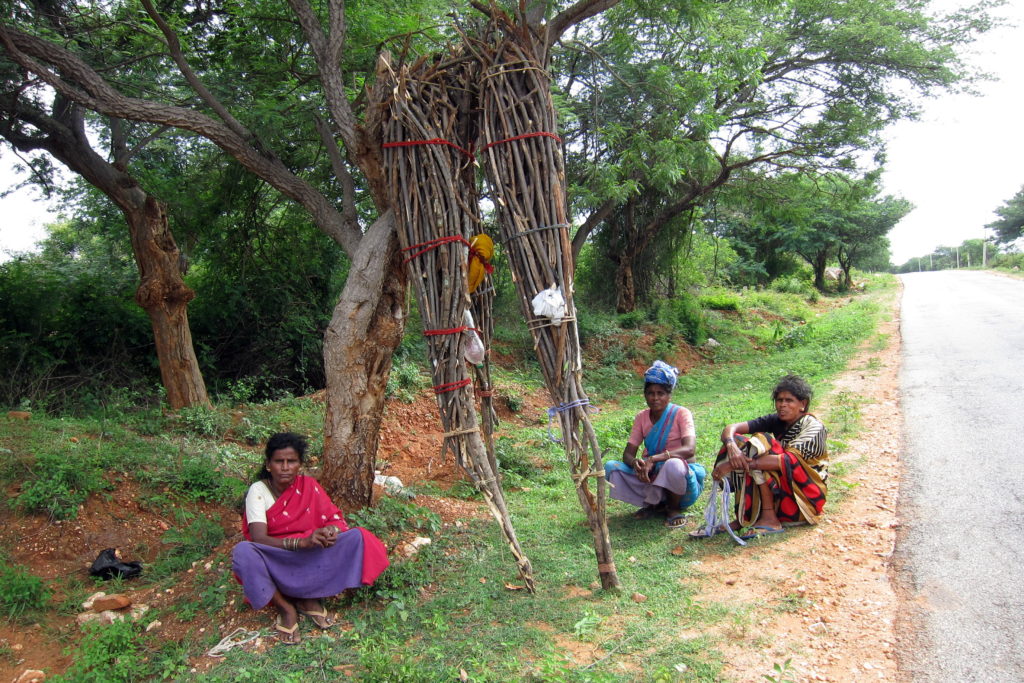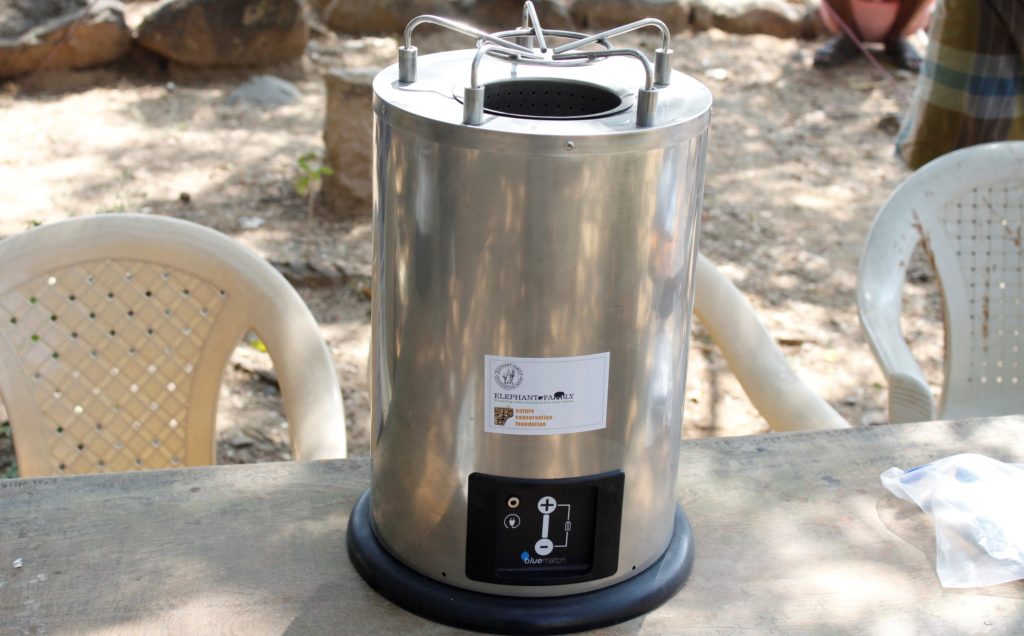Cauvery and MM Hills WS, along with other adjoining Protected Areas (PAs), form a large interconnected area which is home to many species of endemic flora and fauna, while also constituting possibly the largest contiguous tiger habitats found in the country. It is evident why Karnataka is said to be home to around 10% of the world’s population of tigers and around 15-18% of India’s tigers! With around 17% of forested land, Karnataka also ranks fourth in the country in terms of green cover and is estimated to harbour nearly 50% of the Western Ghats’ biodiversity.
These two PAs also extensively support large clusters of communities settled within and along the periphery, making it an extremely critical landscape.
In a landscape where people and wildlife are dependent on the same resources, human-wildlife conflict arises quite often. Conflict situations arise when wild herbivores or carnivores venture out of forested areas into adjoining human settlements for various reasons. While agricultural fields with standing crops of maize, sugarcane, banana, etc. attract elephants and wild boars; leopards can prey on livestock and others in the face of declining wild herbivorous prey populations.
In a landscape where people and wildlife are dependent on the same resources, human-wildlife conflict arises quite often.
Factors like habitat loss, fragmentation, and degradation of wildlife habitats, poaching, forest fires, overgrazing, and various other reasons, have triggered a drastic rise in human-wildlife conflict situations. Human-wildlife conflicts also occur when people venture into forested areas to gather firewood and forest produce and graze cattle.
Local communities around MM Hills and Cauvery WS interact with these forests every day and are heavily dependent on them for firewood and Non-Timber Forest Produce (NTFP) like fruits, plants, fibers, and resins. They’re especially dependent on firewood for living and livelihoods, making it a critical resource. However, the same firewood trees also happen to be important food and nesting resources for animals, putting a handful of tree species under huge pressure. Additionally, cutting trees for firewood also contributes to deforestation, reducing the carbon stock and firewood burning contributes to the ever-increasing carbon dioxide (CO2) emissions, a major factor that figures in any climate change debate.
The Story
Our team brainstormed on how to mitigate human-wildlife conflict while also benefitting the communities and wildlife in the process, and the answer was to provide these communities living within and on the periphery of the Cauvery and MM Hills Wildlife Sanctuaries alternatives to firewood (LPG and eco-stoves).
Much like the habitats within the forests, these communities are settled in small villages and hamlets that form a unique ecosystem of their own, with their own survival mechanisms. All are Below Poverty Line (BPL) families and some are even under the Antyodaya Anna Yojana (AAY, classified as the poorest of the poor), making LPG cookstoves completely unaffordable, and firewood the only option. Most of them don’t have assured or a steady source of income, and are daily wage labourers or small farmers heavily affected by seasonality.
Women mostly collect firewood and handle household chores. At the crack of dawn, one can see groups of saree-clad women walking into the forests – splashes of colour against the green and brown backdrop. They spend nearly 6-8 hours on average, per trip, around thrice a week collecting firewood and walk back home with heavy loads on their heads, dust rising around their feet in clouds as they walk on tiredly. From our data, we estimated that a woman spends over 800 hours annually just collecting firewood. To put it in perspective, this is the equivalent of 100 working days (eight-hour days), or more than a month of full 24-hour days (approximately 34 days). It’s important to note that these women don’t get leaves or holidays and don’t earn anything for this effort.

It is the women who primarily handle the kitchen work, and are thus most exposed to the toxic effects of firewood. Firewood takes time to heat up and burn, often causing a delay in meals and subsequently delaying the children’s departure for school. The small kitchen is usually dingy, poorly lit, and poorly ventilated; and the woman is left breathing in the firewood smoke for hours a day while she cooks meals and heats water for her family.

We conducted lung function tests to establish a baseline for a health indicator and found that prolonged exposure to firewood smoke had caused lung damage in most of these women, some of whom were developing chronic respiratory diseases like asthma as well.
On average according to our data, a family of four members uses as much as 2.3 tonnes of firewood annually, giving off approximately 4 tonnes of carbon dioxide emissions annually. Projected for all the people in that landscape, your eyes would pop out at the figure! After our intervention, in the last year alone, we recorded a 40.4% reduction in firewood dependence among the beneficiaries and an improved quality of life.

The process isn’t as simple as it seems to be, but sometimes it’s easier to explain all the details verbally. We interview the villagers, identify potential beneficiaries, and conduct training and myth-busting sessions. Nearly 51% of the people in the landscape are illiterate and cannot fill out the required forms by themselves, or are too old to travel to the nearest town to open bank accounts. Many have been trying to get LPG connections but couldn’t figure it out. We step in to provide them LPG cookstove connections and offer documentation support, support to get refills, and follow up for a year after the intervention. Each beneficiary receives a two-burner stove, LPG cylinder, regulator, pipe and lighter as part of the package.

We aim to reduce their dependence on firewood for multiple reasons, with a focus on the conservation of forests and species: inhaling the smoke causes severe respiratory diseases in women, the firewood trees are important food and nesting resources for wild animals, going into the forests daily exposes the women to chance encounters with wildlife and firewood dependence contributes towards deforestation and global warming. Unfortunately, we had to discontinue the lung function tests due to COVID-19 and are now looking for alternatives to monitor carbon monoxide/dioxide levels or the respiratory health of the women to track improvements as they switch from firewood to LPG.

This journey has had multiple challenges and has been akin to running a hurdle race. Ask anyone on the team and they’ll say getting up, dusting off, and moving on is the only way ahead. They don’t know how to turn back, and even a global pandemic could only slow them down but not halt their progress. Most of the people were wary of LPG cooking; they had strong misconceptions that cooking on gas stoves would cause gastric issues or the cylinders would blow up randomly. Some were even wary of the tablets we recorded data on. Some of the villages are so remote, there are no roads and only bikes can manage to reach there. How would a four-wheeler carrying LPG cylinders ever get there? How would the people continue to reap the benefits of this intervention? We had to think on our feet a lot of times, and in this scenario came up with an alternative. The BlueMatch Eco-Stove is a portable device and offers pretty much the same benefits, and it was the solution to our problem. It is fuelled by small wooden pellets and as per our trials, can reduce the firewood consumption by as much as 80%, which to us was perfect. And so, for these remote areas, we started distributing the BlueMatch Eco-Stove to our beneficiaries along with a bag of pellets, solar panel and a charging cord.

For every problem, we had to find a solution and today, we’ve managed to give LPG connections to over 1,800 people.
We were able to assess post-intervention respiratory health for only some women before COVID-19 made that impossible, and we found that their lung function had stabilised and stopped deteriorating in the absence of firewood smoke. Through conversations, we find that the women now have more time to work productively, are healthier, happier and their children get to school on time. The forests can recover and with a large shift away from firewood usage and related trips into the forests, the human-wildlife conflict will also reduce. The carbon stock will remain, and carbon dioxide emissions will reduce drastically. Altogether, these present a very well-rounded and holistic result, and we couldn’t hope for a better output.

2 comments
Great job done!
Thanks for the article.
Absolutely! Great job